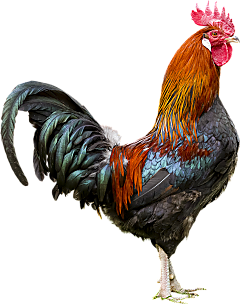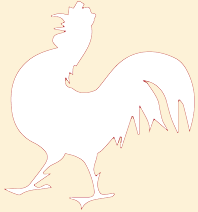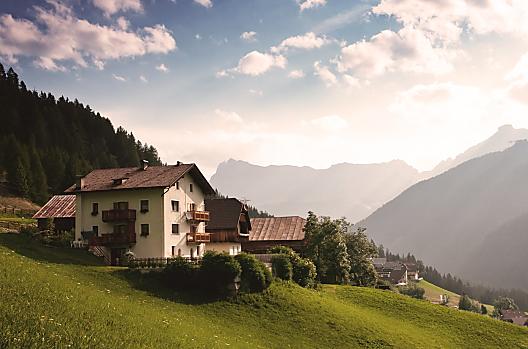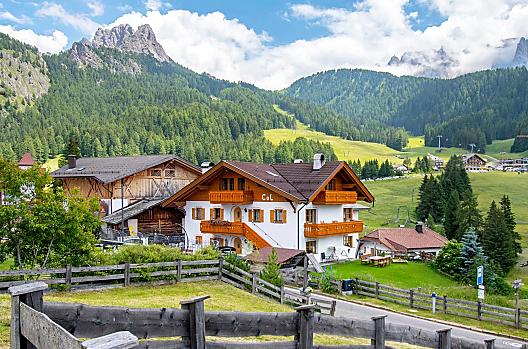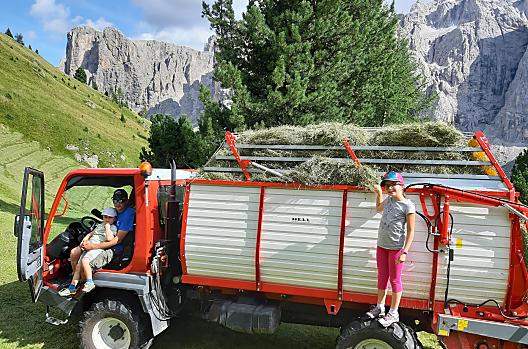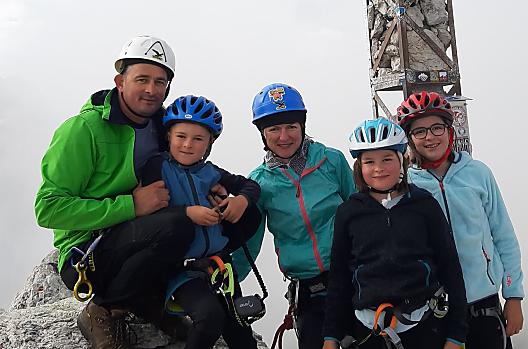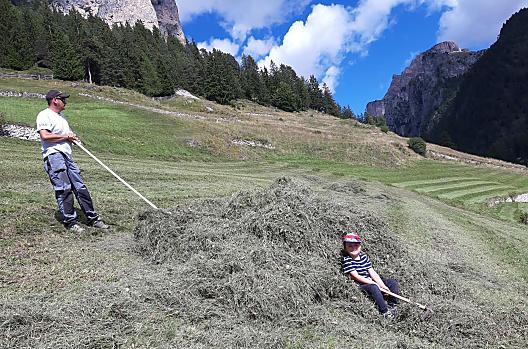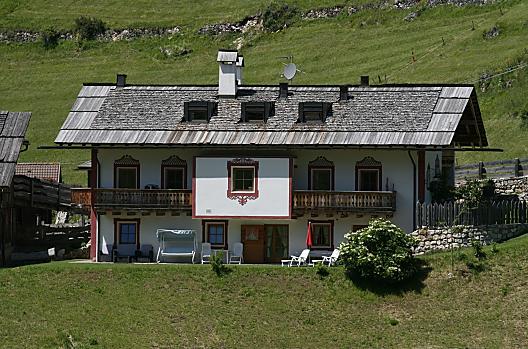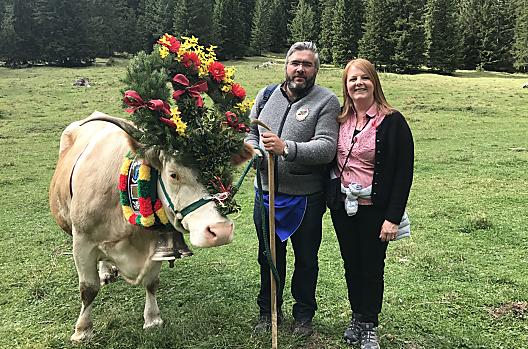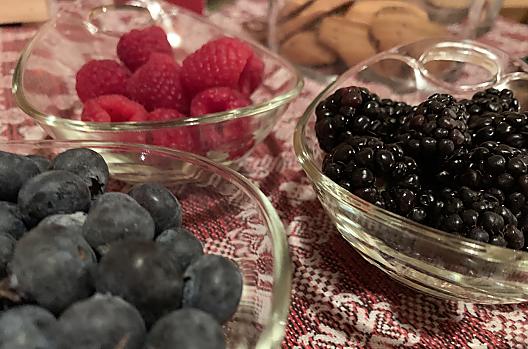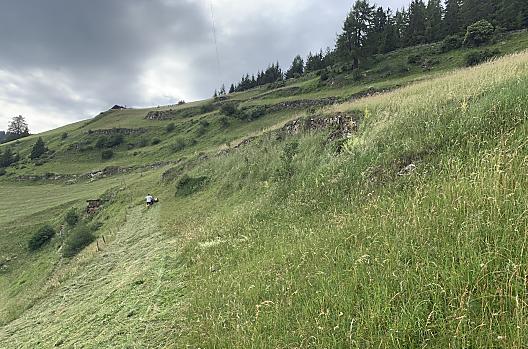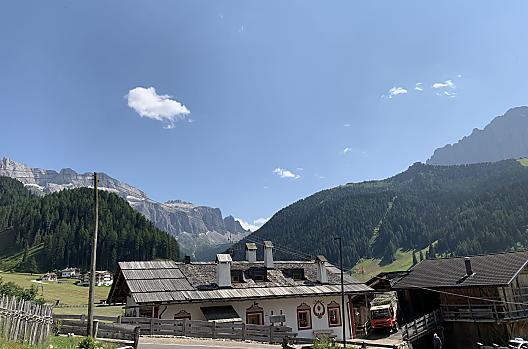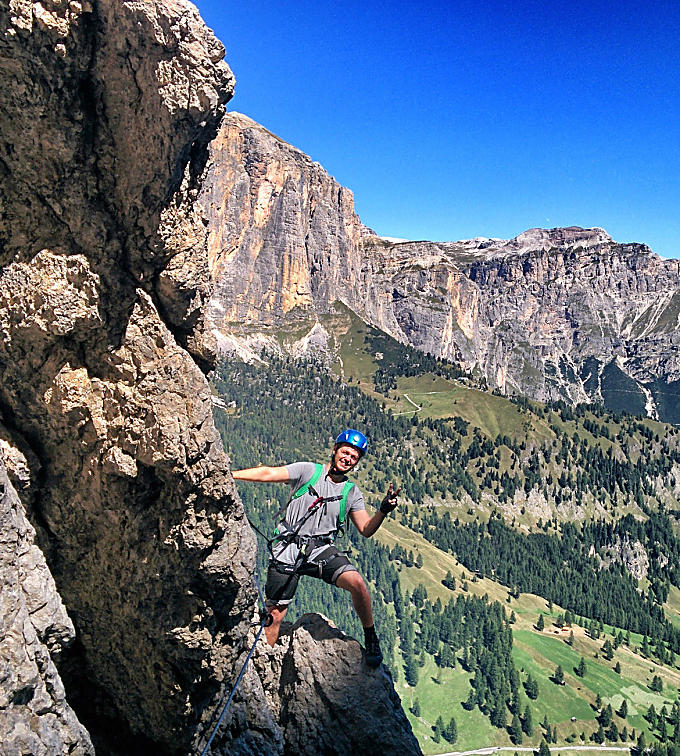
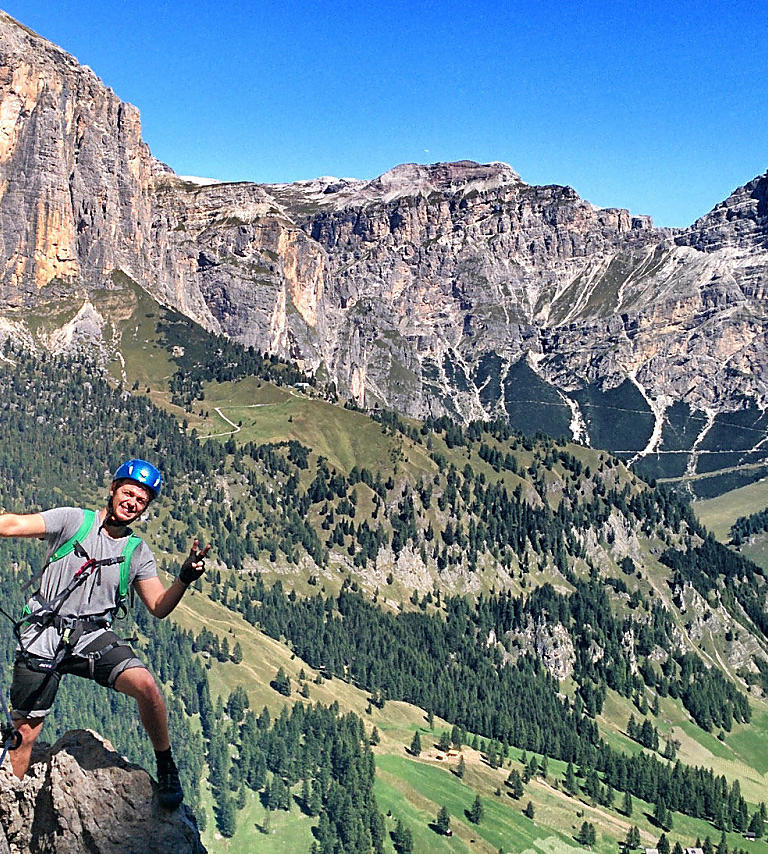
Day trip destination
Pisciadù 'via ferrata' at Corvara: a heart of stone
The Pisciadù 'via ferrata' leads into the stony heart of an ancient culture: the Sellastock massif lies right in the middle of the five Ladin valleys.
Before the Romans and German tribes ventured into the Dolomites, the ancestors of the Ladin people were already living here. Today, the Sellastock massif forms the heart of the Ladin valleys of Gröden, Gadertal, Fassatal, Ampezzo and Buchenstein. It is not just the centre of Ladin culture in Italy, but together with famous mountains like the Drei Zinnen and the Latemar-Rosengarten, it is one of the most famous mountainous areas in the world – the UNESCO World Natural Heritage Site of the Dolomites. And the Sella group can lay claim to yet another extraordinary feature.
Rocks and ropes
Plenty of wonderful 'via ferrata' routes lead to the various mountains of the Dolomites. Yet the most popular one in South Tyrol is the Pisciadù, which is wrought in the rock of the Sellastock massif. This is thanks to its accessibility. Coming from Grödental valley by car, the Grödner Joch is the first stretch. Two kilometres further in the direction of Corvara, there is a large car park – the start of the 'via ferrata'. From here, it's not far to the 50-metre-high rock face equipped with iron steps. If you overcome this hurdle on the way up, you get to a short path leading to the actual entry point of the Pisciadù. This secured route goes up vertically, with the Pisciadù waterfall roaring to the left of you and, if you dare to look around, Corvara beneath you. After around two hours at this dizzy height, you reach the highlight of the route – Exner Turm hanging bridge. This breathtaking crossing between two rocky spires is justifiably one of the most-photographed hanging bridges in the country and marks the end of the 'via ferrata'. Thankfully leaving the bridge behind you, you need to walk just 40 minutes to Pisciadù refuge on Pisciadù lake. After a cumulative elevation gain of 724 metres, the menu at the refuge makes for welcome reading.
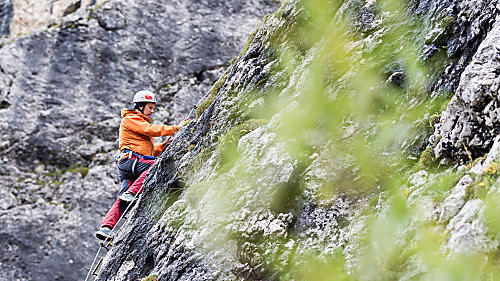
A filmworthy finish
After some hearty refreshment, you are faced with the question: up or down? Both are options from the Pisciadù refuge: If you are feeling top fit, you can go up to the nearly 3000-metre-high Pisciadù peak on the same day. But if the high mountain air is starting to wear a little thin, there are two ways of getting down. Most hikers take the Val Setùs route, which leads back to the car park in around one and a half hours over scree and rubble.
Somewhat longer, but prettier, is the path down through Mittagstal valley, which is a popular destination for ski tourers in winter. The grey and white landscape of the valley was once used as a location for the film 'Cliffhanger', starring Sylvester Stallone.
Climbing the Pisciadù 'via ferrata'
So that a day tackling the Pisciadù 'via ferrata' remains an untroubled one, climbers should bear in mind a few things: the Pisciadù is not one of the most difficult Alpine tours, but you will definitely need to have a certain amount of climbing experience, a head for heights and be surefooted. The route is not suitable for beginners, as the last part of the Pisciadù in particular is to be reckoned with. For this reason, you should have the right equipment: mountain boots, climbing harness, helmet, rope and the right carabiners are essential. And finally, a word on when to set off: the best time is from the end of June to October. The popularity of the Pisciadù means that there is sometimes a queue at some points along the way. If you wish to avoid this 'mountain bottleneck', you should start bright and early or leave it until a little later in the day. If you can, do the Pisciadù on a weekday and avoid the hustle and bustle at the weekend.
Via ferrata Pisciadù
Further information
Set off from the large car park just outside Colfosco (on the road towards the Gardena Pass), above a wooded slope. After a short section secured with cables and a short walk, you reach the start.
There are fixed cables to help you overcome the rocky obstructions in the forest. Head between two massive blocks of rock and continue on the trail to the bottom of the Sella massif. Climb up the cable-secured route to the Torre Exner mountain, which you leave at the top via a little suspension bridge. A fixed-cable route and a trail lead up to the Pisciadù refuge.
The descent is via trail no. 666 (the normal route to the Rifugio Pisciadù hut) through the Val Setus valley and straight down to the car park.
The Dolomites, which many people regard as the most beautiful mountains in world, are an awesome challenge that climbers and mountaineers shouldn't miss. Vertical rock faces and steep towers guarantee plenty of climbing challenges. Doubtless, one of the most famous fixed-rope routes in the Dolomites is the Pisciadù via ferrata (also known as the Via Ferrata Tridentina) in the Sella massif. The via ferrata, easily reachable from Colfosco, has some intriguing vertical sections and a suspension bridge.
*By car
- Coming from Innsbruck: take the A 13 and the A 22 toll motorway and exit at Bressanone/Brixen, following the signs to Brunico/Bruneck along the Val Pusteria/Pustertal road as far as San Lorenzo/St.Lorenzen. Follow the signs to Val Badia/Gadertal
- Coming from Verona-Bolzano: take the A 22, exit at Bressanone/Brixen and continue as above
*By train
The nearest train stations are:
- Brunico - 37 Km
- Bolzano (via Passo Gardena) - 72 Km (via Brunico) – 100 Km
- Connection train station – Alta Badia by the local bus SAD: www.sad.it
*By air
- Innsbruck - 130 km
- Munich – 330 km
- Venice Treviso / Venice Marco Polo – 180 / 200 km
- Verona – 213 km
- Milan Bergamo / Milan Malpensa - 310 /400 km
- Information airport transfer: www.suedtirolbus.it - www.cortinaexpress.it

